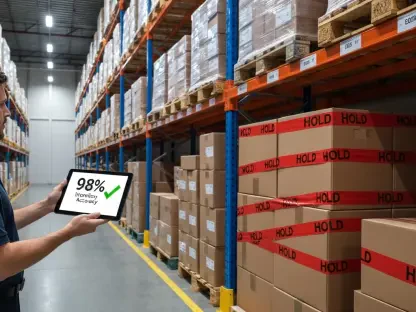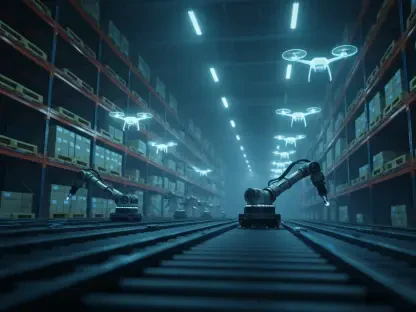On November 14, a catastrophic chain-reaction crash on I-70 in Licking County, Ohio, led to the deaths of six individuals from the Tuscarawas Valley Local Schools community. The heartbreaking incident involved a semi-truck and a charter bus, which resulted in extensive litigation against various parties, alleging negligence and insufficient safety measures. As the local community grapples with its devastating loss, these lawsuits highlight broader issues within the trucking industry, including vehicle safety standards and accountability, shedding light on the pressing need for stricter regulations and enforcement.
The Deadly Chain-Reaction Crash
The tragic accident unfolded when a semi-truck, operated by Jacob DeWayne McDonald and owned by Mid-State Systems, failed to slow down and collided with another vehicle before striking a charter bus carrying 54 individuals from Tuscarawas Valley Local Schools. The impact led to a catastrophic chain-reaction crash that claimed six lives, including students, staff, and parents who were en route to an Ohio School Boards Association conference in Columbus. This horrendous event has left a lasting impact on the community, with residents and families mourning the loss of lives cut tragically short.Among the victims were 18-year-old student John Wyatt Mosley and 15-year-old Katelyn Owens, whose promising futures were abruptly ended. In the aftermath, grieving families and community members confronted the sudden loss, intensifying their quest for accountability and justice. The sheer scale of the tragedy has united the community in its resolve to see those responsible held accountable, believing that the crash could have been prevented had proper safety measures been in place. This tragic event underscores the inherent dangers present on the roadways and the critical need for adherence to safety protocols.
Allegations of Negligence and Safety Failures
In the wake of this tragic crash, the estates of the victims have filed wrongful death lawsuits in Franklin County, aiming to hold those they believe are responsible for the fatal incident accountable. These lawsuits target multiple entities, including Fyda Freightliner Columbus, Pioneer Trails, Inc., Mid-State Systems, and several individuals. The core of the plaintiffs’ allegations centers on negligence, specifically focusing on the failure to equip the semi-truck with vital crash prevention safety systems that they argue could have averted the disaster.The lawsuits allege that the semi-truck had been sold lacking essential safety mechanisms, putting both the driver and other road users at significant risk. The plaintiffs argue that this failure represents a clear disregard for accepted safety norms, highlighting the necessity for stricter regulations and enforcement within the trucking industry. By targeting multiple entities in the legal actions, the plaintiffs aim to create a broader coalition of accountability that will resonate throughout the industry, compelling change not just for their sakes but for future road users as well.
Legal Actions and Defendants
The wrongful death lawsuits involve several defendants, each playing a critical role in the complex web of accountability the plaintiffs seek to unravel. Fyda Freightliner Columbus and its representative, Timothy J. Fyda, are accused of selling the semi-truck without necessary safety equipment, a pivotal point of contention that underpins the allegations of negligence. Mid-State Systems, the truck’s owner, faces similar allegations regarding negligence in maintaining and operating the vehicle, adding another layer to the intricate legal proceedings.Additionally, the lawsuits name Pioneer Trails, Inc., and its representatives as defendants due to their involvement in the broader logistics chain. Other entities such as Honda Logistics North America, One World Logistics of America, CEVA Contract Logistics U.S., and Daimler Truck North America also face legal scrutiny, underscoring the extensive network of responsibilities linked to the tragic incident. The multi-faceted nature of these lawsuits highlights the interconnectedness of the trucking industry and the myriad points at which safety can either be upheld or neglected, ultimately affecting the outcomes on the road.
Ongoing Investigations and Future Proceedings
The National Transportation Safety Board (NTSB) has committed to a thorough investigation into the crash, with the aim of identifying the specific factors that contributed to this devastating accident. As the investigation progresses, further details are expected to emerge, potentially implicating additional parties and providing critical insights into the root causes of the crash. The NTSB’s findings will be crucial not only for the ongoing legal proceedings but also for framing future safety standards and industry regulations.The wrongful death lawsuits are currently scheduled for trial in 2025, although this date may change based on the pace of the discovery process and the exchange of information between attorneys. The lengthy timeline underscores the complexity of gathering evidence and building a compelling case, ensuring that all aspects of the tragedy are thoroughly examined. As the legal proceedings unfold, the balance of evidence and arguments will shape the future landscape of accountability within the trucking industry, with potential implications for regulatory practices and safety protocols.
Broader Implications for the Trucking Industry
The lawsuits stemming from the chain-reaction crash raise critical questions about safety standards and accountability within the trucking industry. The plaintiffs’ focus on the alleged lack of essential safety systems in the semi-truck draws attention to the broader issue of vehicle safety regulations. This case serves as a poignant reminder of the need for rigorous standards and enforcement to prevent similar tragedies in the future. It also highlights the responsibility of companies within the supply chain to ensure that their vehicles are adequately equipped with modern crash prevention technologies, thereby safeguarding both their drivers and the public.This case has the potential to become a catalyst for change by shining a spotlight on systemic issues within the trucking industry. As the legal battle continues and more details come to light, the hope is that increased scrutiny will lead to more stringent safety measures, potentially saving lives in the process. The plaintiffs’ quest for justice resonates beyond their immediate tragedy, pushing for an industry-wide reassessment of safety protocols and operational practices.
The Path Forward
On November 14, a tragic chain-reaction accident occurred on I-70 in Licking County, Ohio, claiming the lives of six members from the Tuscarawas Valley Local Schools community. This devastating crash involved a semi-truck and a charter bus, leading to extensive legal actions against multiple parties. The lawsuits accuse these parties of negligence and failing to implement adequate safety measures. As the community mourns this profound loss, the legal battles underscore significant issues within the trucking industry, such as the need for higher vehicle safety standards and responsible practices. This incident brings to light the urgent requirement for stricter regulations and more effective enforcement to prevent such tragedies in the future. As families and friends cope with their grief, the broader conversation about safety standards and accountability in the trucking industry takes on added importance, highlighting gaps that must be addressed to ensure safer roads for everyone.









